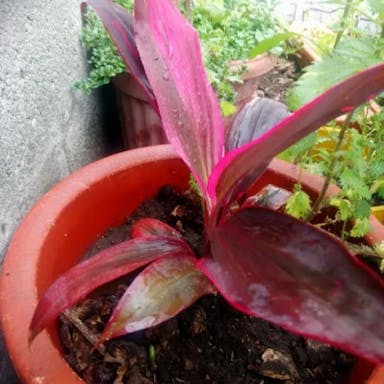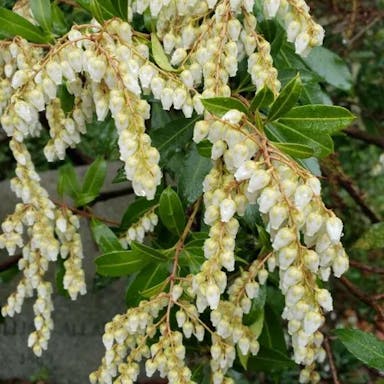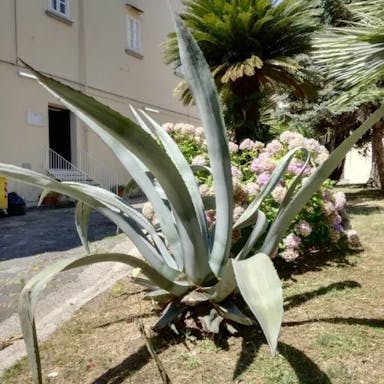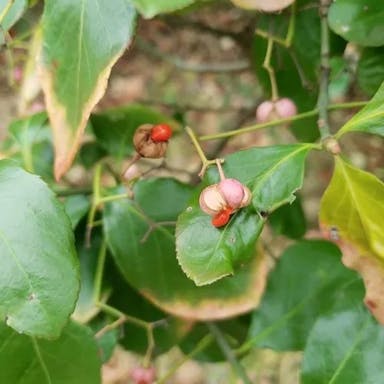Mealytree has two main varieties: V. lantana and V. opulus. V. lantana is characterized by its large, glossy leaves and white flowers, while V. opulus has smaller leaves and clusters of red berries. When selecting seedlings, choose ones with healthy green leaves and sturdy stems. For seeds, opt for plump, firm ones without any signs of mold or damage. Ensure seedlings are free from pests and diseases before purchasing. It is advisable to buy from reputable nurseries to guarantee quality. Conduct research on the specific requirements of each variety to ensure successful growth.
Mealytree
- Scientific name
- Viburnum lantana
Basic Information
- Viburnaceae Family Viburnum Genus Mealytree Species
- Viburnaceae > Viburnum > Viburnum lantana
- 83%
- The Completeness of This Encyclopedia
Please help us complete the encyclopedia, Terrarium is a encyclopedia service to be completed with everyone in the world. Currently, this page is 83% complete. For more information on how to contribute, please click here.
- Shrub
- Height
- 500cm ~
- Flower Color
- Leaf Color
- Anthesis
- spring
- Sunlight Exposure
Full Sun Long hours of sunlight from morning to afternoon Partial Shade A location in the shade of a tree or where either the morning or afternoon is shaded Full Shade A place where there is no direct sunlight
- Full Sun
- Hardiness Zones
This is an indicator to know to which zone each plant can winter. Knowing the zone of each plant gives you an idea of the cold temperature resistance when grown in the ground without a roof. 2: -42.7 to -40.0 3: -39.9 to -34.4 4: -34.3 to -28.9 5: -28.8 to -23.3 6: -23.2 to -17.8 7: -17.7 to -12.2 8: -12.1 to -6.7 9: -6.6 to -1.1 10: -1.0 to 4.4 11: 4.5 to 10.0
- 5
- Cold resistance
- Excellent
- Heat resistance
- Fair
- Habitat of origin
- Europe, Asia
- Growth Rate
- Normal
What is Mealytree (Viburnum lantana)?
What is Mealytree (Viburnum lantana)
Flower meaning
Mealytree, scientifically known as Viburnum lantana, is a deciduous shrub native to Europe and Western Asia. It belongs to the Adoxaceae family and is commonly referred to as Wayfaring Tree. The plant typically grows up to 10 feet in height and has a dense, rounded form with dark green, ovate leaves that turn reddish-purple in the fall. Its flowers are small, white, and fragrant, blooming in clusters in late spring to early summer. The fruit of Viburnum lantana is a red to black drupe that attracts birds. This plant is relatively easy to grow, tolerating a wide range of soil conditions and sun exposure, making it a popular choice for gardens and landscaping. Viburnum lantana is valued for its ornamental qualities and its ability to attract wildlife, adding beauty and biodiversity to outdoor spaces.
Calendar of Mealytree (Viburnum lantana)
Calendar
Mealytree is susceptible to various pests and diseases, including aphids, scale insects, and powdery mildew. These pests can weaken the plant by feeding on its sap or causing fungal infections, leading to stunted growth and yellowing of leaves. Preventive measures include regular inspection of the plant for early detection of pests, maintaining proper air circulation around the plant, and avoiding over-fertilization which can attract pests. Additionally, using insecticidal soap or neem oil can help control aphids and scale insects, while fungicides can be used to treat powdery mildew if detected early. Withering of Mealytree can be caused by severe infestations of pests or diseases, which disrupt the plant's ability to photosynthesize and absorb nutrients. It is essential to address these issues promptly to prevent further damage to the plant.
How to grow Mealytree (Viburnum lantana)
Watering
The flower language commonly used in America for the Mealytree plant includes: - Purity - Innocence - Sweetness - Simplicity One typical example is purity, symbolizing the plant's clean and untainted nature, often associated with new beginnings or fresh starts. Birth flowers are specific to each month and date.
Soil and Fertilizer
Mealytree thrives in full sun to partial shade, requiring at least 6 hours of direct sunlight daily. It exhibits moderate cold tolerance, able to withstand temperatures as low as 20°F (-6°C). The plant has a high heat tolerance, thriving in temperatures up to 100°F (38°C). It prefers an optimum temperature range between 65-85°F (18-29°C). During summer, provide ample water and ensure well-draining soil to prevent waterlogging. In winter, protect Mealytree from frost by moving it indoors or providing frost protection. Place the plant in a location with good air circulation and avoid placing it near drafts or heating vents. Aim for consistent sunlight exposure for optimal growth.
Sunlight and Place
For the Mealytree, watering frequency should be moderate, typically every 7-10 days during the growing season. Ensure the soil is evenly moist but not waterlogged, allowing the top 1-2 inches to dry out between waterings. During winter, reduce watering to every 2-3 weeks to prevent root rot. Adjust watering based on environmental conditions, such as humidity levels and temperature, to maintain optimal soil moisture. Avoid overwatering, as it can lead to root suffocation and fungal diseases. Regularly check the soil moisture by inserting a finger into the soil to determine if watering is necessary.
Advanced Information of Mealytree (Viburnum lantana)
Pruning
Mealytree thrives in well-drained soil with a pH level between 6.0 and 7.0. It benefits from a balanced fertilizer with an N-P-K ratio of 10-10-10. Fertilizer should be applied in early spring before new growth begins, and again in mid-summer to support flowering and fruiting. It is recommended to use a slow-release fertilizer to prevent nutrient leaching. The amount of fertilizer applied should be based on the manufacturer's instructions, adjusted according to the plant's size and growth rate. Regular soil testing can help determine the specific nutrient needs of Mealytree. High-quality organic matter can also be added to improve soil structure and fertility.
Planting and Harvest
Mealytree requires regular pruning to maintain its shape, promote new growth, and remove dead or diseased branches. Pruning is essential to enhance the plant's overall health and appearance. It is best to prune Mealytree during late winter or early spring before new growth begins. Remove any crossing or rubbing branches, as well as those growing inward towards the center of the plant. After pruning, make clean cuts just above a bud or lateral branch to encourage proper healing. Avoid leaving stubs or cutting too close to the bud. Apply a layer of mulch around the base of the plant to retain moisture and suppress weed growth.
Propagation
Mealytree is best potted for better control of soil conditions and size management. To pot Mealytree, choose a container with drainage holes, fill it with well-draining soil, and plant the tree at the same depth as its nursery pot. Water thoroughly after planting and place in a location with bright, indirect sunlight. Repot Mealytree every 2-3 years in a slightly larger pot to prevent root-bound conditions. If mishowing signs like yellowing leaves or stunted growth occur, check for root rot or pests, adjust watering, and provide appropriate fertilization.
Pests and Diseases
Mealytree propagates best through seeds, division, and cuttings. Seeds can be sown in well-draining soil, kept moist, and placed in a warm, sunny location. Division involves separating the plant into smaller sections, each with roots, and replanting them. Cuttings can be taken from healthy stems, placed in a rooting hormone, and planted in a suitable growing medium. To multiply using multiple methods, sow seeds in spring, divide the plant in fall, and take cuttings in summer. Harvest seeds when they are mature and dry, divide the plant when dormant, and take cuttings from new growth.
Habitat of Mealytree (Viburnum lantana)
Habitat
Toxicity of Mealytree (Viburnum lantana)
Health Benefits
- edible
- Inedible
- Toxic
- No toxicity
NO DATA
Toxic for dogs and cats
NO DATA












